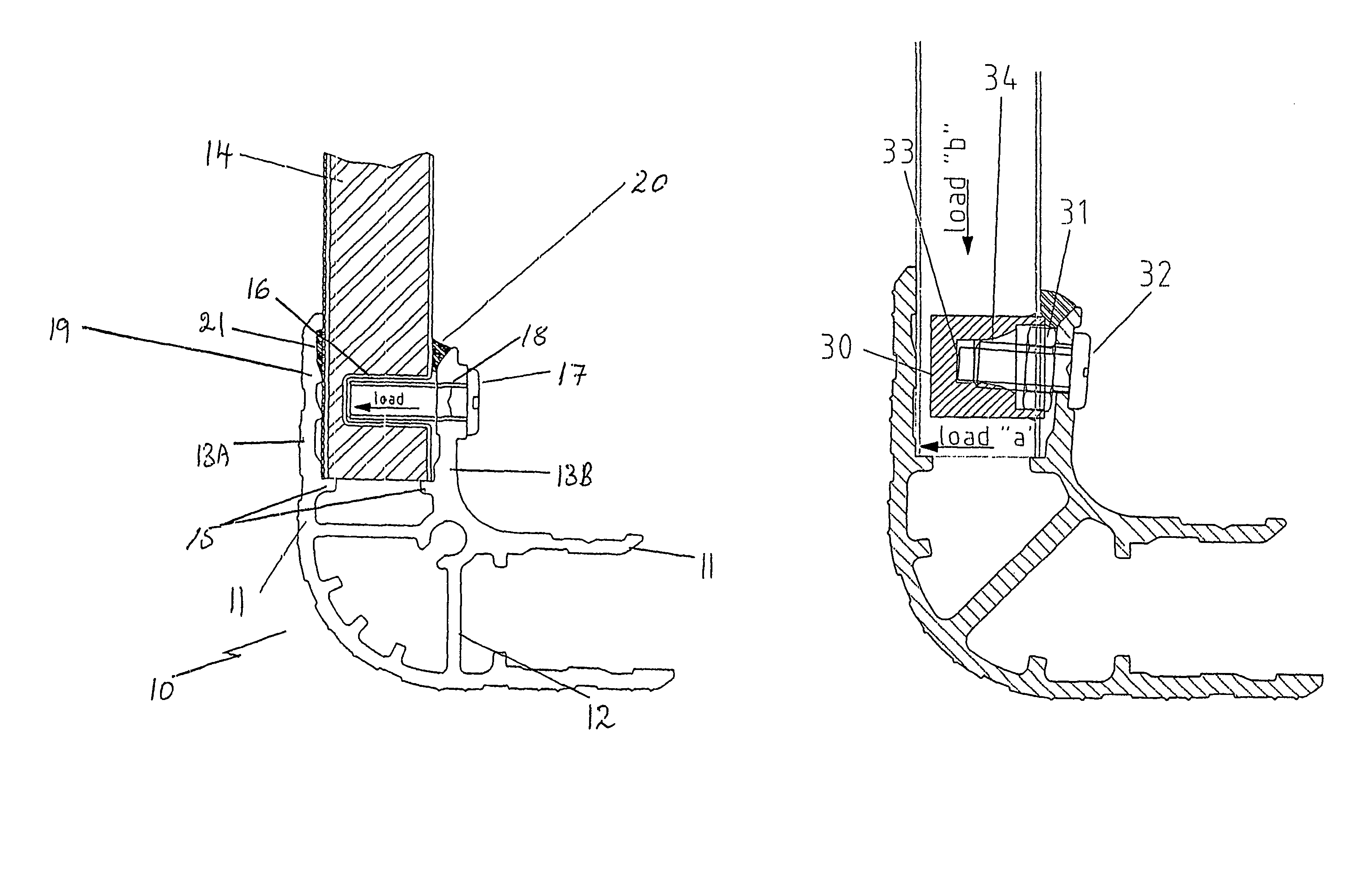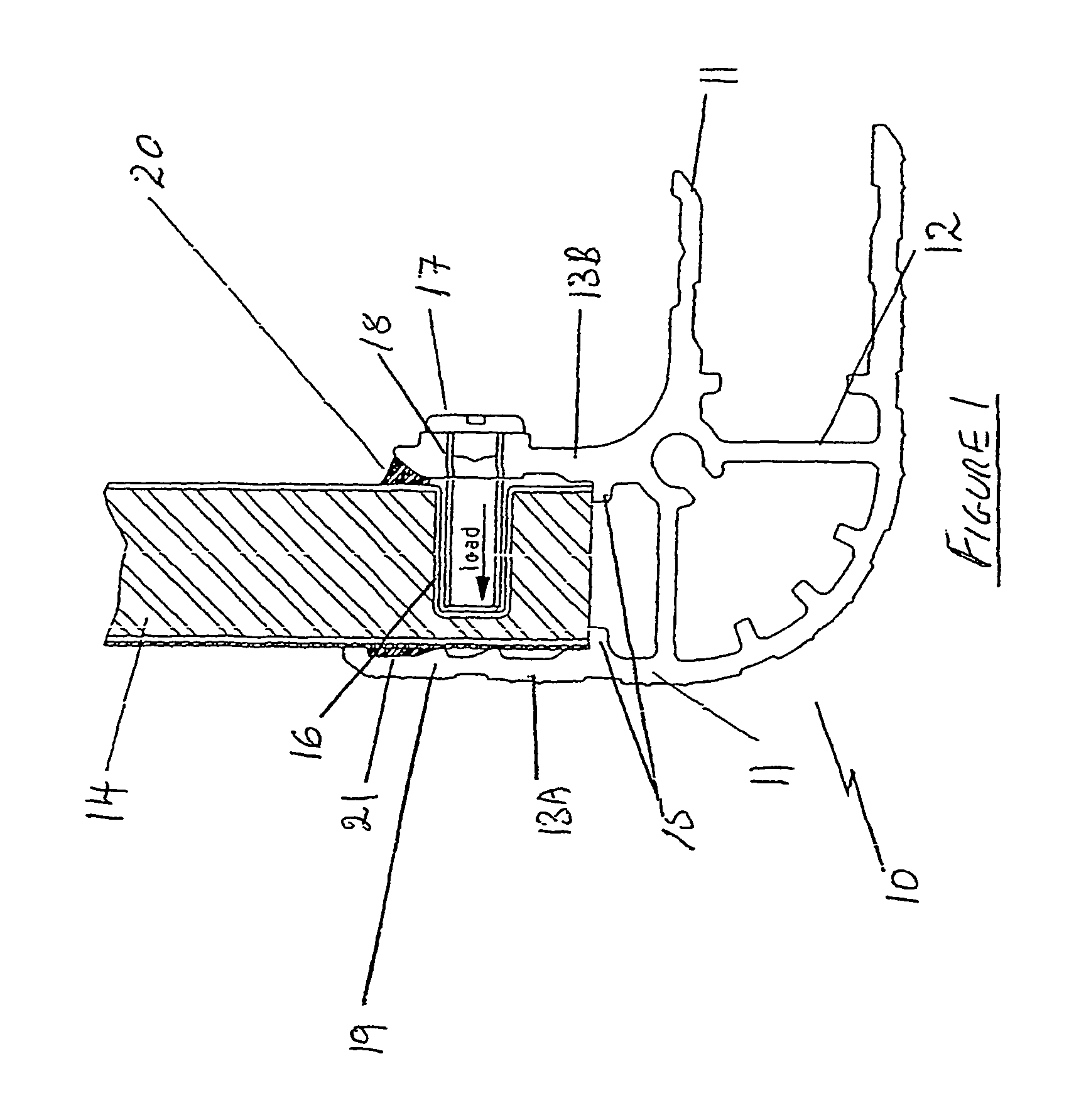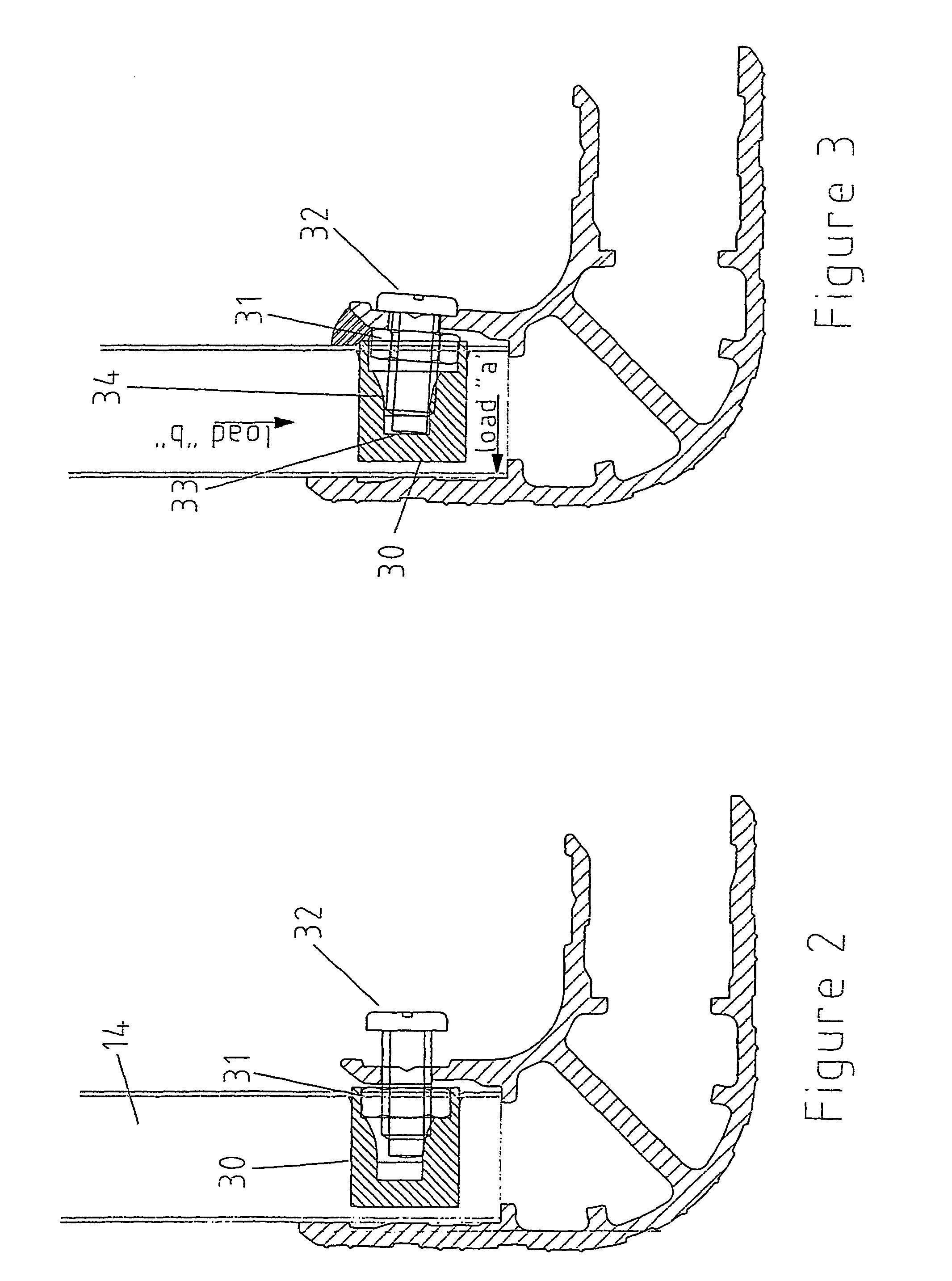Panel joining member
a joining member and panel technology, applied in the field of joining members, can solve the problems of less efficient sealing of the joint between the panel and extrusion, less stress on the screw tightening, and less stress on the panel, so as to achieve the effect of facilitating the introduction of the joining member and reducing the stress on the panel
- Summary
- Abstract
- Description
- Claims
- Application Information
AI Technical Summary
Benefits of technology
Problems solved by technology
Method used
Image
Examples
Embodiment Construction
[0045]Referring initially to FIG. 1, this shows a first embodiment of a coupling means for securing panels together to form an article. The panels can be used in the construction of containers such as hand-portable cases or those which are to contain larger loads to be transported on lorries or ships. The containers are of modular construction and can be easily assembled either by the panel manufacturer or at a separate production site. Alternatively, panels can be joined together to form, for example, a partition wall.
[0046]The coupling means shown in FIG. 1 comprises a joining element 10. The joining element 10 can be formed from an extruded plastics material having good impact and scuff resistance or a metal (such as extruded aluminium). Two panel retaining portions 11 of the joining element 10 are at right angles to each other and separated by strengthening walls 12. Joining elements can be produced however with retaining portions at other desired angles, for example 180°. Each ...
PUM
 Login to View More
Login to View More Abstract
Description
Claims
Application Information
 Login to View More
Login to View More - R&D
- Intellectual Property
- Life Sciences
- Materials
- Tech Scout
- Unparalleled Data Quality
- Higher Quality Content
- 60% Fewer Hallucinations
Browse by: Latest US Patents, China's latest patents, Technical Efficacy Thesaurus, Application Domain, Technology Topic, Popular Technical Reports.
© 2025 PatSnap. All rights reserved.Legal|Privacy policy|Modern Slavery Act Transparency Statement|Sitemap|About US| Contact US: help@patsnap.com



